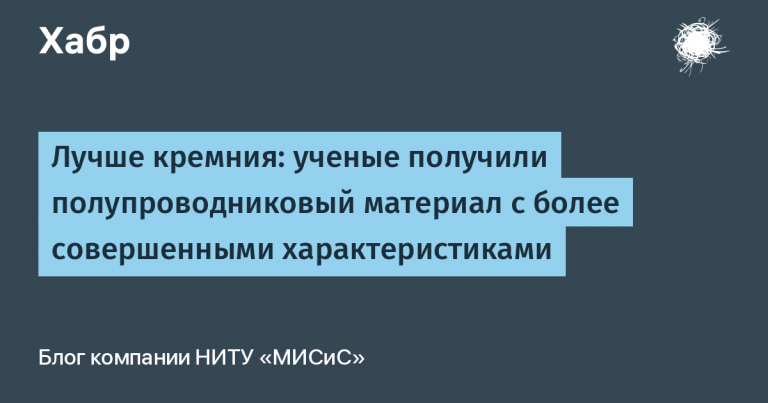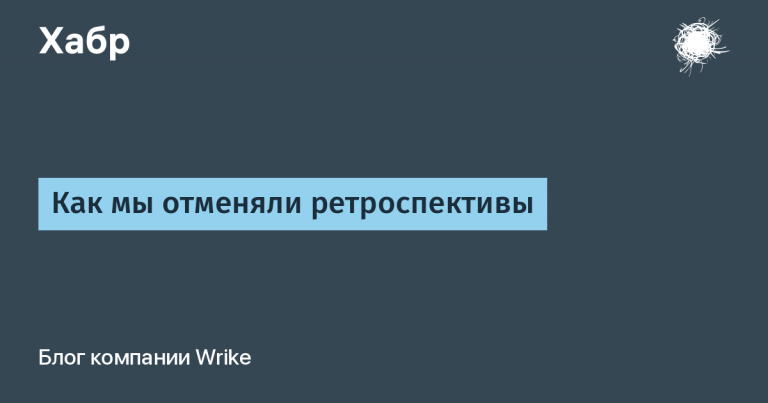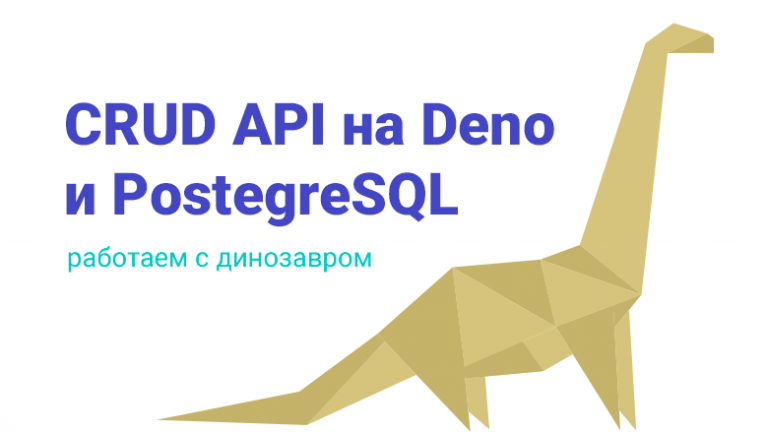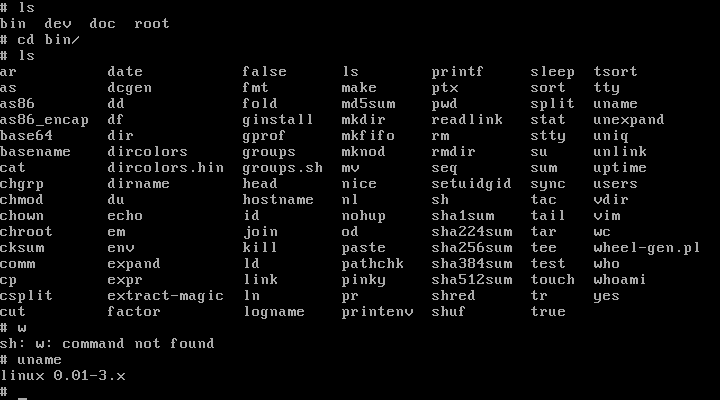1 year in telegram bot development. Victories, disappointments and warnings
Where are we in a year?
Today the audience of our bot (number of registered users) already exceeded 12 thousand, of which 3 thousand are active and visit at least once a month. Of course, many fall off over time (as in any other product), but new ones come in their place. Even with the complete absence of marketing, about 200 new users per week come to our bot.
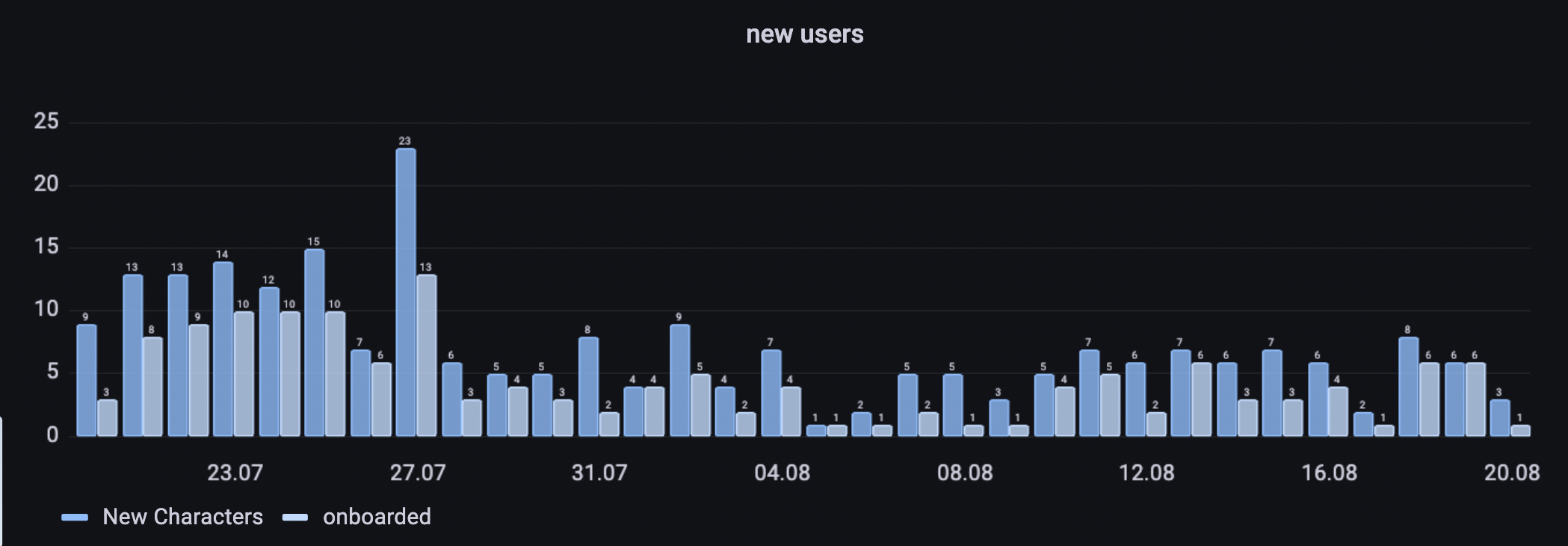
During development, we managed almost completely rebuild the command several times, since working in a startup (with a salary below the market and without cookies, since there is no office) is certainly not suitable for everyone. Some of the new employees did not complete the internship, someone managed to burn out in a couple of months, and our main developer even managed to fall into depression, get out of it and return to work on the product (which he loves so much, надеюсь ты это читаешь).
During the year, we also managed to test a hundred different hypotheses in marketing, product, features, roll out more than 10 updates (major and not), and fix more than a thousand (if not ten thousand) bugs.
The only problem that the product has today is that in a year we have not learned how to make money on it. Perhaps some of the readers will say that this means that our product is *** (and will have the right to their opinion), but we do not give up and believe that this is only a matter of time. In addition, during this time we have managed to gather a super community that supports us, actively contributes to the product itself and gives us faith in a brighter future.
Below I would like to sum up our main victories and defeats. I am sure that this experience can be useful for other developers. Of course, someone else’s experience is worse than your own, but perhaps it will help you avoid many mistakes (and / or) prepare for the harsh reality.
Our failures and defeats
In this section, I would like to share the main failures and mistakes that we managed to make during the year of active work on the product. I hope this saves you a lot of nerves and money.
The English-speaking audience of telegrams is a myth
Initially, we wanted to launch the product for an English-speaking audience too. We looked at the reports of Telegram itself, in which their application is almost in 3rd place in popularity in the world and is growing at the speed of light. To do this, we spent a lot of hours localizing game content into English (and this is not only the main interface, but also 5000+ programming tasks). We also spent about 100-150 thousand rubles for advertising and attracting those same foreign users to our great product.
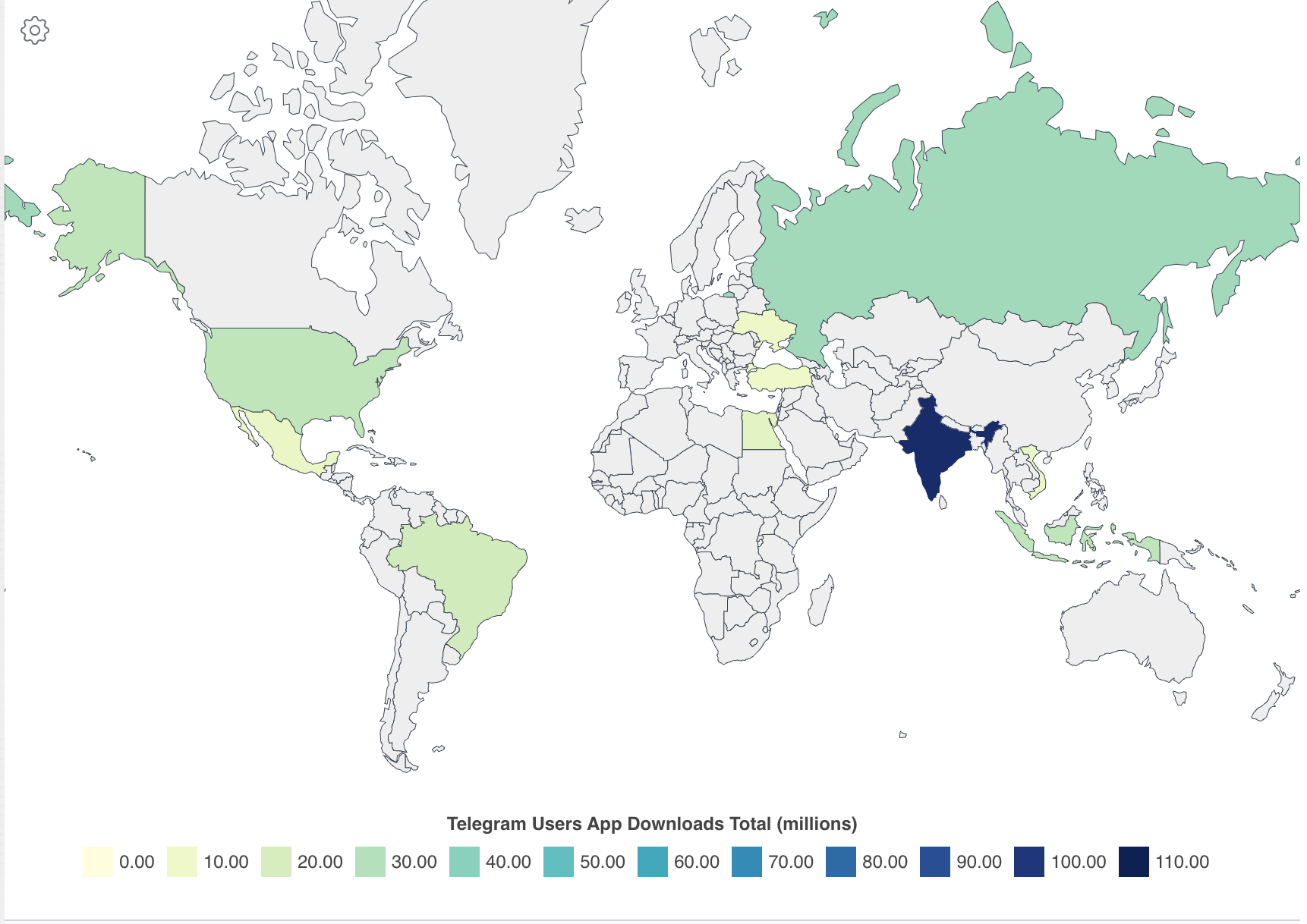
Outcome – pain, disappointment and resentment from the time and money spent. It turned out that the English-speaking audience of telegrams is a myth. To be more precise, Telegram is really popular in a number of regions, for example, India, Asia and South America. But bad luck, it is not used in the way that users are used to. It turned out that in India it is used stupidly as a free file hosting service, in Asian countries the audience is 99% cryptans discussing tokens and coins, and in South America, only oppositionists are sitting in general to read alternative media.
Se la vie, we said and went on. Perhaps someday Telegram will reach these countries fully, or we will find money and launch a mobile application. Wait and see.
Monetization in bots is a pain
Our second and probably main problem is that we still haven’t figured out how to monetize our bot. It seems that in addition to marketing and sales that have not yet been built in our product, this situation is also influenced by culture: we simply do not yet have such a “pay for something in a bot” pattern. We have learned to make purchases on the website or in a mobile application for a long time, but paying for something in Telegram is something new.
Maybe I’m wrong, but if so, write in the comments what did you buy in telegram over the past six months?
As I wrote earlier, our business model consists of selling an educational subscription, as well as micro-transactions in the game, like buying a game item for a nominal 14 rubles. Neither the first nor the second model yet brings us enough money to cover our expenses, but as I wrote earlier, we do not despair yet, as we see that people like our product.
Now we have order 0.5% paying userswhich of course is not enough. But we don’t want to put pressure on anyone and breed money, so for now we are sawing the product further and filling it with useful content. I will not give advice on monetization, firstly, I myself have not understood anything yet, and secondly, it is a very individual matter.
Team retention and morale
The third problem we faced was team retention. And it’s not that we travel around here and rage on employees, it’s just that stability, high salaries and voluntary medical insurance are not about us. Almost all of our employees came to us from the same bot, because they liked our product.
But as we all know, enthusiasm won’t last long, so in the end we ourselves decided to shrink the team to only the positions we needed and began to pronounce all the “horrors of working in a startup” in more detail. Now we are fine. Almost everyone has already managed to burn out, burn out and return to work.
From the conclusions and recommendations: look for people who are close to you in spirit, who share your values and believe in your product. But even with such motivation, do not forget to encourage your colleagues and thank you. If not with money and bonuses, then at least order a pizza and thank you once again for the work done.
Our victories and cool insiders
In this section, I would like to share the main points that our team is proud of, as well as insiders (don’t be aggro, I really don’t know the analogue of this word in Russian, so it’s in infogypsy) that we found this year.
Retention is the key to success
At first, we did not really understand what metrics we should monitor in the first place. Through trial and error, we realized that retention (percentage of audience retention) is the key for this kind of products. This makes sense when you consider that each new user costs you some money, and if this one. the user will leave you in 2 days, then the probability of earning at least something will quickly tend to zero.

Thus, right now we are completely focused on growing retention metrics and keeping our new and old isers. We have already achieved relatively good metrics: we have 20% retention for 7 days, while for most mobile games it is usually below 5% (although we don’t know if it’s correct to compare us with mobile games)
If we assume that your product has reached the target audience, then further retention is most strongly influenced by 2 things: the quality of onboarding (affects 1-7 day retention with great force) and the fullness of the product (affects 14+ day retention and is responsible for so that your product does not stupidly underestimate the user).
Community is strength
Also, as I mentioned in the article, we managed to build a super cool community of novice developers in the telegram, who chat every day, help each other, participate in the development of the project and do not miss a single bug.
By the way, for some reason, our community got a couple of senior developers from serious corporations who are also actively involved in the project and log into the bot almost every day. I would like to believe that our format just went to them and thus helped them to earn their favor.
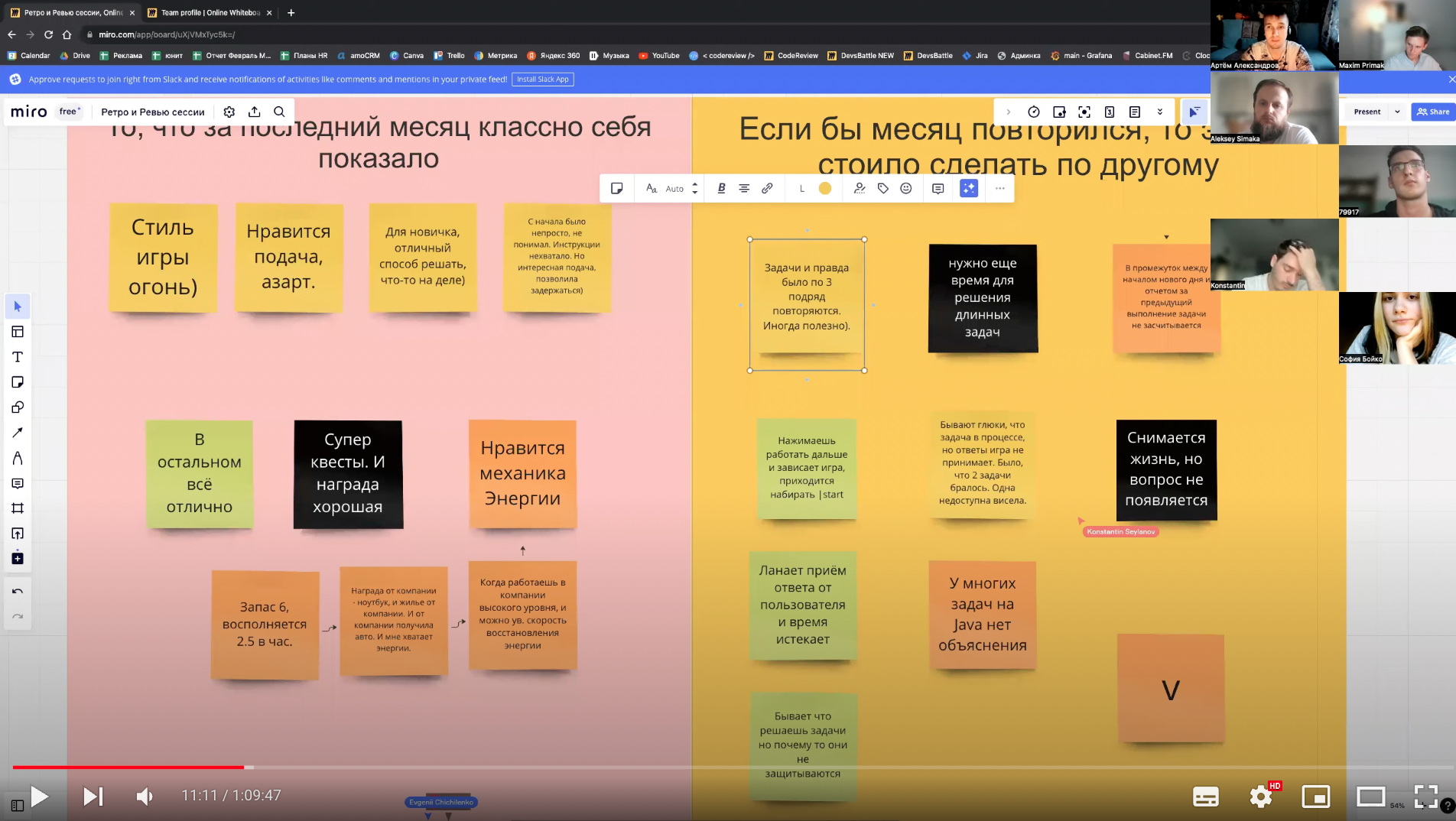
Community is a super useful thing if used correctly. We have three main applications that we are very proud of:
1) Sprint Review – We call users every two weeks. Sometimes 20+ people come to them. These calls helped us to build a constant influx of feedback from active users who evaluate our progress in product development, and also generate solutions to certain problems themselves.
2) Content creation – since the basis of our product is programming tasks that need to be taken from somewhere all the time, at some point generating such tasks became a big problem. And then our guys came to the rescue, who add about 100 new tasks every week. In addition to the constant replenishment of the database of tasks, the tasks themselves become more interesting and diverse.
3) The community also helps us a lot in the process of teaching and immersing newcomers to the project (when new users have questions), and very cool and effective in reporting all bugs.
Analytics – light at the end of the tunnel
Having started building our bot and gaining the first audience, we realized a very important thing: making a digital product without analytics is like a builder working in complete darkness. Analytics allows the team to understand exactly how users use the product, as well as introduce a normal system of product tests. After all, in the end, the whole business is very simply decomposed into metrics, conversions and other indicators.
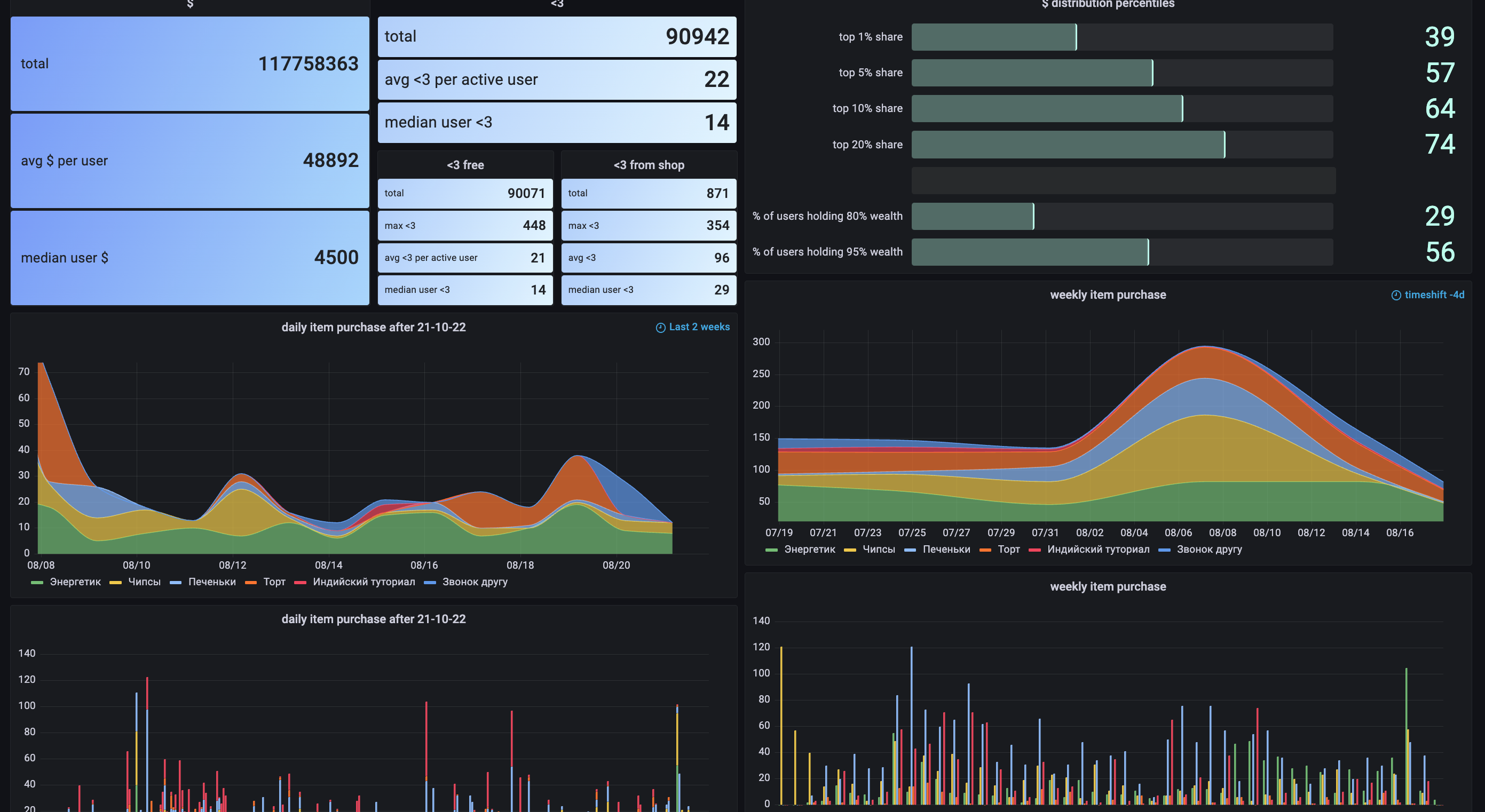
For the analytics system, we chose Grafana . This solution will probably be poorer than Tableau dashboards, but it is completely free, super flexible and custom (using PostgreSQL queries and small skills in visualization, you can make very acceptable dashboards).
Having created the analytics system, we have finally moved from chaotic tests and going on a whim to real product hypotheses and data-driven decisions. Of course, we did not manage to implement all the tricks (for example, we are still too lazy to set up a normal A / B testing system), but the practice of project management has already grown to new heights.
If you are interested in reading in more detail, I wrote an article about this earlier:
SCRUM – Super Development Accelerator
Half a year ago, we finally introduced SCRUM. And although at first the whole team was stormy from the endless Dayly, Spring Review, Backlog Refindment and Spring Planning, which normally take so much time, by now we all know for sure that this decision made us faster. and more consistently. The speed of work has become 2 times faster, tasks have ceased to be lost, and every time we plan our resources and tasks for new sprints better and better.
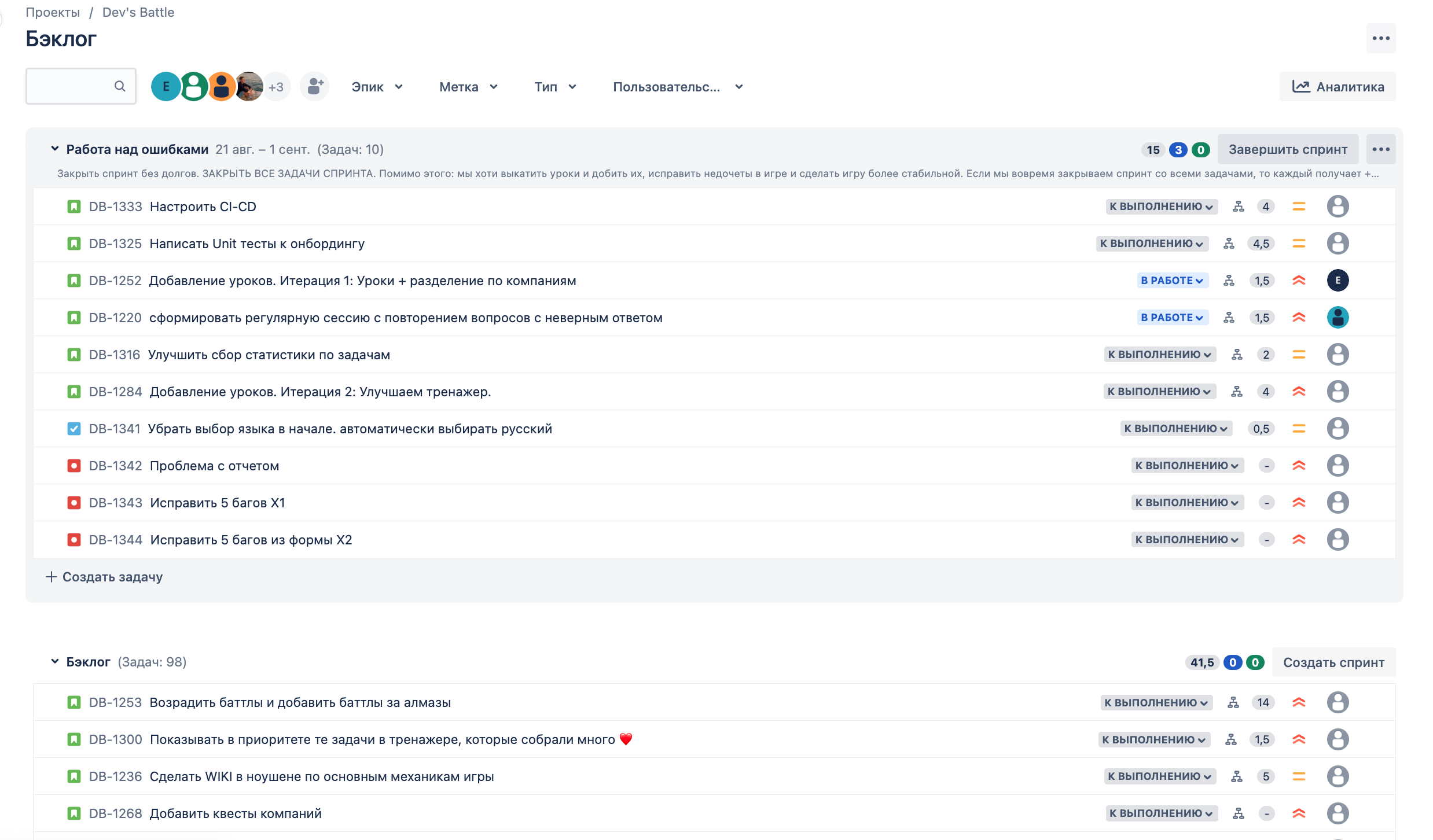
I often hear that SCRUM is not good for small teams, but I do not agree with this opinion. This approach, when applied correctly and provided that the developers accept the rules of the game, shows itself well even on such a small team as ours (now we have 6 people, of which only two are involved in development)
Therefore, my advice is not to postpone and introduce such practices immediately starting your new project and assembling a team, so it will be easier for you to immediately accustom everyone to a new approach and organization.
Referral – golden source of free users
The last of the victories that I would like to mention is the victory in marketing.
Now more than 10% of the users of our bot are people who came through links from other players. As it turned out, this mechanic (referral) does not infuriate our users at all, but rather helps them share the product with others. Now our offer looks like an offer to share a product in exchange for additional energy (one of the main consumables in our game)

We’re also now rolling out player-to-player battles, which will allow you to invite friends who aren’t in the game to a duel. We are sure that this thing will bring us even more players from referral channels, since such an offer looks much more native and in fact offers the user in exchange not just some kind of game resource, but real feelings and fun (unique experience)
Unfortunately, this channel may or may not work at all. But if you manage to build it, then you will receive a huge bonus to the development of your product in the form of constantly increasing players, for whom you still do not have to pay!
Conclusion
Surely everyone who has read this far has some kind of conclusion in their head. And it’s very difficult for me to draw a conclusion, as well as to evaluate my progress over the year, given that the product has not yet reached payback.
One thing is for sure, this experience was worth living and also worth continuing. During the year, the team and I learned a lot about development, products, marketing, gathered a cool community and made a product that is used every day. In a day in a bot, users decide almost 100 thousand programming tasks. Well, isn’t that the only thing to be proud of?
We modestly celebrated the birthday of the product at a sprint review with users and continue to saw our product. We will keep you informed and be sure to write here if we learn something new and interesting.
PSIf you want to try our game yourself – here reference. We welcome your comments, ideas and suggestions.
